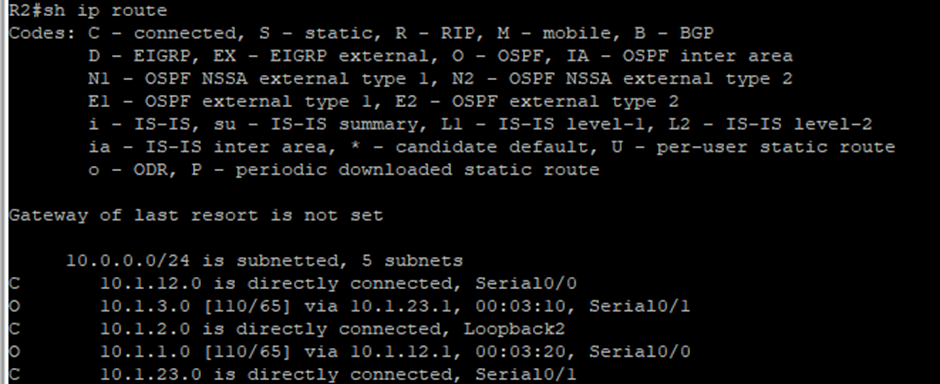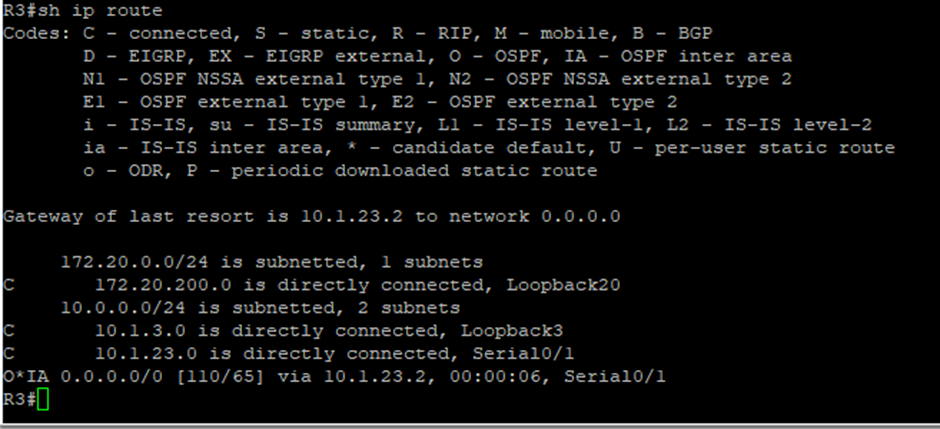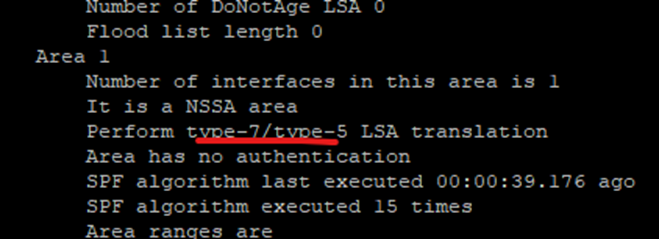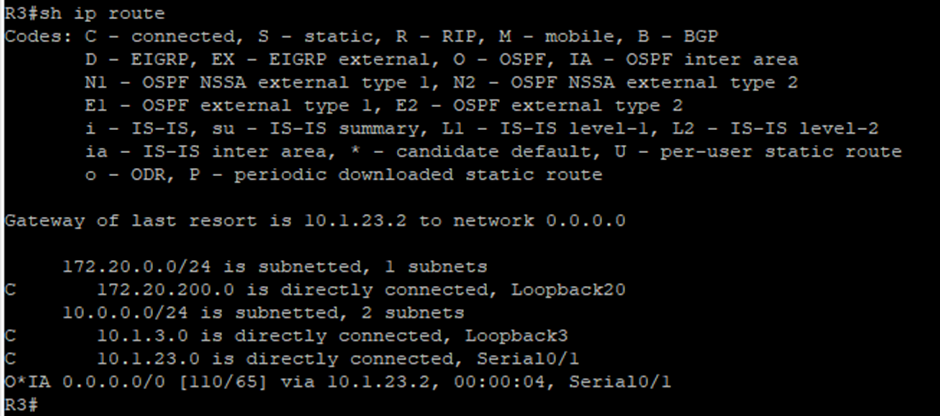Set up the GNS3 lab as follows and configure the basic settings.
R2 has directly connected networks and OSPF routes. Noticed R2 has no inter-area routes because R2 is in both areas, acting as ABR.
A STUB area has not received any
external routes. It receives default routes and OSPF inter-area routes.
What advantage of having a default route rather than a more specific route? Router memory and processing are conserved because the router has fewer routes to contend with.
Why do all routers in the OSPF area need to know that the area is STUB? Routers need to know that an area is a stub for consistency. No routes generate LSA type 5.
TOTALLY STUBBY AREA
We need to configure ABR only.
# area 2 stub no-summary
After configuring the totally stubby area, we can see a single default route from the backbone.
It will remove other routes and have
only a default route.
Advantage TOTALLY STUBBY AREA instead of STUB area? Routers in the area only see intra-area routes and a default route. This can save a lot of router memory and processor time. However, if lost any route, it may lose to find the best optimal route.
Why need to configure only ABR other than all routers? ABR is the boundary and ABR passes LSA to others. So, it needs to filter out only LSA type 3 and the default route.
NOT SO STUBBY AREA (NSSA)
NSSA allows routes to be
redistributed from an ASBR into that area with a specific LSA type, which gets
converted to a normal external route at the ABR.
TOTALLY NSSA
Let's consider the R3 routing table.
R2(config)
# router ospf 1
# area 1 nssa no-summary
Now R3 will have only one
default route, other than directly connected routes.
Where is useful to make NSSA? If want to allow an area to inject external routes into an OSPF domain while still retaining some of the stub characteristics of the area such as not accepting external routes that originated in other areas.
If you have doubts, please don't hesitate to comment below.











No comments:
Post a Comment